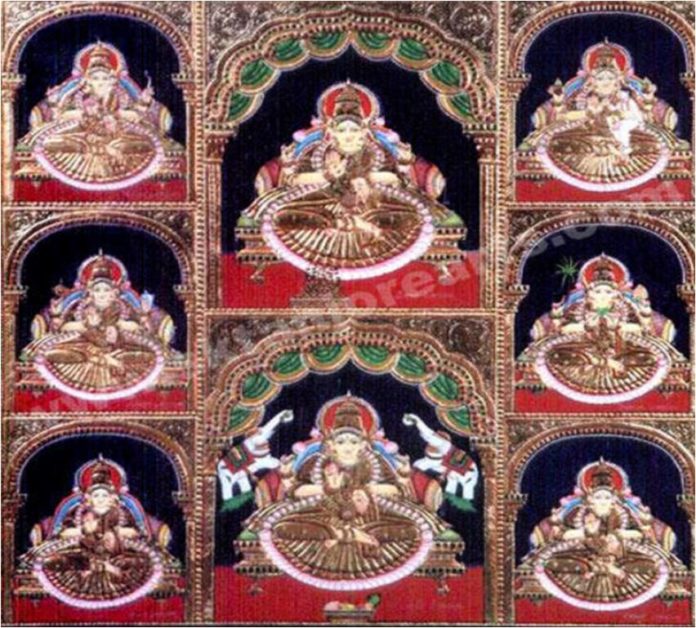Tourist spots have always been of a grave heritage for a country, state or locality. It not only boost the economy and generates jobs but also propagates the culture and tradition of that place, of people who live there. I come from this tiny little town called Kailashahar, in the northern parts of one of “Ashtalakshmi”, Tripura. It might be less popular in terms of its number of tourist places but abundant in terms of open clear sky, the sight of children playing and running around, pristine greenery and warm ambiance.
The twenty-minute ride from Kailashahar would take you to Unakoti, a tourist place in the lap of lush green environment, also known as Raghunandan Hills, on one of the parts of thickly forested hills. A grand spectacle on the display of rock-cut images of 99,99,999 God and Goddesses. If the specificity of numbers left you wondering then the answer is in the etymology of the name ‘Unakoti” which means ‘one less than a crore’ (a crore being a unit in the Indian Numbering System which is equivalent to ten million in the Arabic Numbering System) and has its origins in Hindu mythology. A trek through the mountains would, of course, leave you in awe of the place and marveling over the bas reliefs, but it would also cloud your mind with the curiosity of who made the structure and how it got there. Although tracing the archeology of the place leaves room for ambiguity and mystery but it is interesting to see what they got in store for our inquisitive minds. Bas-reliefs/low reliefs is a kind of sculptures through which any image is projected at a shallower depth. This technique is often used in the art of ancient Egypt and other Near Eastern cultures. It has been assumed that these stone bas-reliefs were made between the 7th to 13th centuries. They even claim that the sculptures belong to two different periods.
But India is a country of storytellers, where folklores travel faster and wider than any archeological shreds of evidence. And this Shaivait pilgrimage has been associated with many such stories. One that is popular amongst the locals is that Once upon a time, Lord Shiva with his entourage of deities was in his way to Kashi, one of the holiest cities in India. There were one crore or 10 million of them. On their way, Lord Shiva decided to stop at the Raghunandan Hills for the night, but he asked the other 99,99,999 Gods and Goddesses to wake and be ready before the sunrise. So that they could cover the distance to Kashi. As the dawn nudged the night, other than Shiva, all the other God and Goddesses were fast asleep. He was furious with rage and as a result, he opened his third eye. Lord Shiva cursed all the other Gods and Goddesses and turned them into stone. The stone images of ‘Una-Koti’ or one less than a crore Gods and Goddesses are thus said to be found on the hills of Unakoti.
The other popular tale is the legend of Kalu Kamar, a local sculpture. The story goes, he was a great devotee of Goddess Parvati, consort of Lord Shiva and prayed to be taken to their abode Kailasha. But the gods were reluctant to take him to their heavenly abode because he was after all a mere mortal. To avoid the unavoidable, they came up with a plan. Goddess Parvati asked him to make one crore sculptors of the Gods and Goddesses before dawn to appease Shiva. But to their surprise, the Sculptor was of extraordinary caliber. Before the dawn, he had already made 99,99,999 sculptures. Lord Shiva became worried that the mortal sculpture would complete the task. So he asked the cock to crow just before the usual time. Hearing the cock crow, Kalu Kamar was extremely disappointed. He stopped his work then and there thinking that it was already dawn. He missed his task by one sculpture. And the place came to be known as Unakoti. There are many folklores and tales but it has no solid pieces of evidence to claim.
What makes Unakoti unique and Special is its galore even in this secluded place, with streams flowing by and shreds of trees standing tall. There is no ticket system, everyone is welcome.
There is no shops and stalls around either (except during melas), the place is devoid of bustling regular economy but with chirping birds and a picturesque place. Yes it hasn’t seen much of a development but The most famous Unakoti relief is perhaps the face of Shiva known as the “Unakotiswara
Kal-Bhairava” which measures almost up to 30 feet accompanied by two Goddesses, one of them is Goddess Durga. Due to the presence of the images of Shiva and Durga, one of the major Hindu festivals celebrated at Unakoti is the Ashokastami festival, a day before Ram
Navami, every year. This festival, which takes place between March and April each year, celebrates the victory of Lord Rama over the evil king of Lanka, Ravana. The festival is visited by thousands of devotees and pilgrims. Yes, it has seen its bad days until it was overtaken by Archeological Survey of India, that has initiated some developments. Yes, its beauty deserves to be acknowledged by people all of the world. But until that happens, let this magnificent place be tucked safely amidst the silence, Which inspires awe in people who stumble upon it. And as people often say, let this be Tripura’s best-kept secret.
Author: Antara Purayastha











